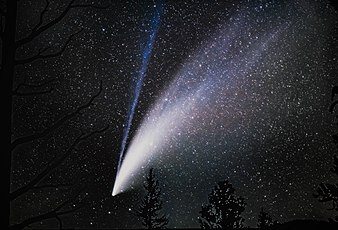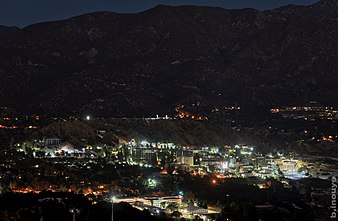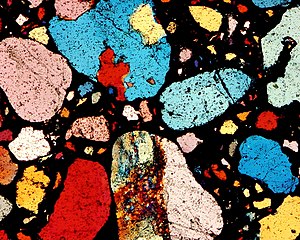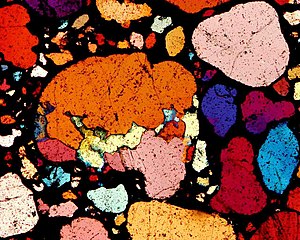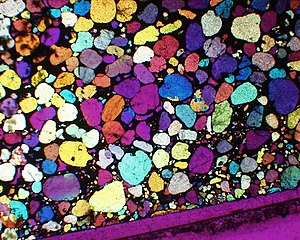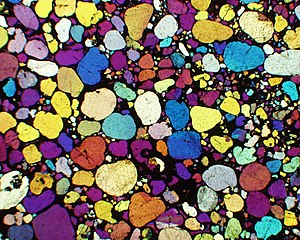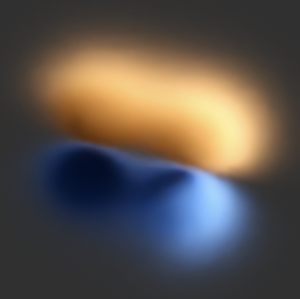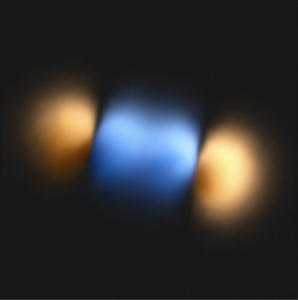Commons:Wiki Science Competition 2021/Winners/United States
Jump to navigation
Jump to search
Estonia · Finland · France and Monaco · Ireland · Italy · New Zealand · Macedonia · Poland · Russia · South Africa · Spain · Switzerland · Thailand · Ukraine · United States ··· The rest of the World
![]() This gallery contains the national finalists of the 2021 Wiki Science Competition in the United States. The jury selected 42 finalists across six categories from 391 submissions. These images represent the United States at the international level. For more information see the main results announcement.
This gallery contains the national finalists of the 2021 Wiki Science Competition in the United States. The jury selected 42 finalists across six categories from 391 submissions. These images represent the United States at the international level. For more information see the main results announcement.
| Astronomy | ||||
| Jellyfish Nebula by Ram Samudrala. Data collected over two years reveals the supernova remnant interacting with the molecular clouds surrounding it, seemingly as though it is striking them with bolts of lightning. |
Milky Way at Joshua Tree by Benjamin Inouye. An early-season image of the Milky Way from the dark site closest to Los Angeles. |
Heart Nebula by Ram Samudrala. The 330-light-year diameter complex contains the eponymous emission nebula, along with a separate region labeled the Fishhead Nebula, as well as ~15 dark nebulae and a small open cluster.
| ||
| IceCube Neutrino Laboratory at night by John Hardin. The ICL during the South Pole winter. The image is exposure-fused to correctly expose the red safety light on the building. | Comet NEOWISE by Benjamin Inouye. | Sharpless 216 by Ram Samudrala. One of the closest planetary nebulae to us, and one of the largest in terms of appearance from us because of its closeness, but a very faint object.
| ||
| NGC 7822 by Ram Samudrala. The emission nebula contains examples of active star forming regions that use the material in the nebula to shape the overall structures until there is no more raw material left, creating a cavity in the middle. |
| |||
| NON-PHOTOGRAPHIC MEDIA | ||||
| Strange attractor generated by a simple recursive neural network by Wiscdragon. An example of the many beautiful and complex chaotic structures that can be obtained from recursive nonlinear systems. | Molecular view of glutamatergic synapse by Maria Voigt / PDB-101. This illustration highlights spherical pre-synaptic vesicles that carry the neurotransmitter glutamate, and the pre-synaptic and post-synaptic membranes are shown with proteins relevant for transmitting and modulating the neuronal signal. | Video of flash cotton combustion by Nicholas Curtis, Tho Tran, and Shakti Shaligram. A 10,000-fps video of flash cotton (nitrocellulose fibers) combusting.
| ||
| Respiratory droplet with SARS-CoV-2 by David Goodsell. An artistic conception showing the virus in a respiratory droplet filled with molecules present in the respiratory tract, including mucins, pulmonary surfactant proteins and lipids, and antibodies. | Information content of the SARS-CoV-2 virus by Jonthan Poritz. A visual representation of the information content in the genetic sequence of the original variant of the SARS-CoV-2 virus. | Atomic structural analysis of SARS-CoV-2 spike–antibody interaction by Victor Padilla-Sanchez. Three levels of scale show a SARS-CoV-2 structural model with antibodies, the spike glycoprotein binding to an antibody, and an 80R antibody engineered to bind and neutralize SARS-CoV-2 spikes showing the details of mutated amino acids.
| ||
| Julia Set colored using cyclic functions by Alborz Jelvani. The Julia Set for c= 0.3755 – 0.3i, with the pixels colored using cyclic functions. |
| |||
| MICROSCOPY | ||||
| Sticky geranium anther by Verne Lehmberg. This image of a sticky geranium anther was compiled from 110 separate images, and shows the pollen shape being released by the anther. |
Bismuth nanoflowers by Aylin2789. A scanning electron microscope image of bismuth nanoflowers that were unintentionally synthesized when trying to make a coordination network. | Mouse fetus in yolk sac by Ibackes. A dissecting microscope image of a mouse fetus at gestation day ~18 encased in its yolk sac.
| ||
| Musculoskeletal system of Drosophila embryo by Shuo Yang. Nascent myotubes undergo a dramatic morphological transformation during myogenesis, in which the myotubes elongate over several cell diameters and are directed to the correct muscle attachment sites. | Cesium atom array by Preston Huft. Fluorescence emitted by individual cesium-133 atoms, which have been laser cooled from a vapor in a vacuum chamber and confined in a grid of 1225 optical traps formed by laser light. | Mighty mushroom by Akulshres. Pilobolus is a unique genus of mushrooms which facilitates spore dispersal through an incredible, fast-based mechanism: the sporangium—the small black structure atop the mushroom body—is fired off at 20,000g, the fastest natural acceleration ever recorded.
| ||
| Leaf of purple false brome by Stuart Marshall. This plant was water stressed when imaged so the stomata are closed. The large leaf hairs are hypothesized to also help regulate water loss by holding the aerodynamic boundary layer in place on the leaf in windy conditions. |
| |||
| WILDLIFE AND NATURE | ||||
| Fly laying eggs at a recently deceased chipmunk by Linda Eyster. Female flies lay their eggs in moist locations appropriate for their eggs to turn into larvae, and for those larvae to grow and develop. The eggs will develop into maggots, which can feed on the protein-rich flesh of the chipmunk before pupating. |
Mantis eating a bee by Linda Eyster. Mantis Tenodera sinensis eating a bee it just ambushed. |
Droplets on wings by Filetnagdelaney.
| ||
| Wild grizzly bear by Ashley Lee. A grizzly bear making its way through greenery as it searches for food. | Bighorn sheep on Pike's Peak by CmndrFish. Female and adolescent bighorn sheep on Pike's Peak in Colorado. | California red-sided garter snake by Jaden Clark. Thamnophis sirtalis infernalis in its aquatic habitat in Northern California.
| ||
| Ghost pipes on a nurse log by Melinda Hurst Frye. Ghost Pipes from the Hoh Rainforest on the Olympic Peninsula, Washington, part of an ongoing observation and witness to the brilliance of an active forest, celebrating the smallest of natural efforts and champions. |
| |||
| GENERAL CATEGORY | ||||
| Deer mouse in fluorescent powder by Midwesternmouse. In order to track the paths of wild animals, researchers cover them in non-toxic fluorescent powder that glows under ultraviolet light. When the mouse moves, it will leave a powder trail detectable by UV light and measurable by researchers. | Eggplosion by Nicholas Curtis, Tho Tran, and Shakti Shaligram. A raw egg being shot by a bullet, captured using a Nikon DSLR camera, a high speed strobe, a strobe delay timer, and a lapel microphone. | Marquois scales by Justin Fisher. Marquois scales are a mathematical drawing instrument of widespread use in Britain in the 19th century. This set is by Stanley of London for H. M. Government, and is shown stored in their case with other drawing instruments (top) and on their own (bottom).
| ||
| Sastrugi at dawn by John Hardin. A sastrugi, a snow feature formed by wind erosion, that formed over winter at the South Pole. | Recycled glass by CaptJayRuffins. Recycled glass at a wind turbine facility in Sunset Park, which was elevated to protect from climate change using concrete from the 2nd Avenue Subway dig and recycled glass. | Microscope with fluorescent light source by Skinpath101. Nikon Eclipse Ci microscope with coolLED PE-100 single wavelength fluorescence LED illumination system.
| ||
| NASA Jet Propulsion Laboratory at night by Benjamin Inouye. JPL is known for reaching the edges of the solar system, conducting missions such as Cassini and Mars 2020's Perseverance |
| |||
| IMAGE SETS
| ||||
| Rolling around a spinning top by Bavand Keshavarz. We visualize the flow around a spinning top as it rotates inside a liquid, showing how the injected dye gradually gets trapped inside the spiral of toroidal vortices. |
| |||
|
| ||||
| Fluid droplet jets by Bavand Keshavarz. High-speed photography of patterns of droplets formed from two colliding water jets: a Christmas tree (left), fishbones (center), and hearts (right). |
| |||
| Microscopy of mycelia by Emma993. Three images show the strong elaborate interwoven structure that filamentous hyphae make (left), fungi in the middle of its asexual reproductive phase with the sporangium in the process of releasing spores (center), and an interconnected ball of hyphae with hundreds of thousands of contaminant spores of another fungal species surrounding it (right). |
| |||
| Leptothrix discophora film along the Vermilion River by StarStuff3. The reflectivity and rainbow colors that signal L. discophora have complex origins. One contributing factor is the shape of the organism, specifically its "holdfast," a doughnut-like spherical extension by which each cell attaches itself to the air–water interface. Shine and color result perhaps most of all from the optical properties of the thin polymer films that L. discophora bacterial colonies produce on water as they oxidize iron. |
| |||
| Cometary grains by S. Ray DeRusse. Images of ~1 mm cometary grains from an actual cometary sample. Unlike terrestrial particles, no two grains are exactly alike in composition or shape. |
| |||
| P orbital and its bonds by Miles Waugh. These 3D renderings depict a 2p electron orbital (left), a π (pi) bond (center), and a σ (sigma) bond (right). The density of the volume is directly proportional to the electron probability density, and participating media is rendered with transmission, absorption, and scattering (two indirect bounces) interactions. |
| |||
| Binary black hole by Jeremy Schnittman, Brian Powell, and Scott Wiessinger / NASA Goddard Space Flight Center. This computer generated image shows the warped view of a pair of supermassive black holes orbiting each other, each surrounded by its own accretion disk of hot gas. Insets highlight areas where both black holes produce complete but warped images of their companions. |
| |||
| People in science | ||||
| none this year | ||||
Jury[edit]
- John P. Sadowski, Wikimedia District of Columbia (coordinator)
- Laura Soito, Director of Collections, University of New Mexico
- Jamie Flood, Wikipedian-in-Residence at National Agricultural Library
- Kevin Payravi, Wikimedia District of Columbia
- Sandy Avila, Science Librarian at the University of Central Florida
- Annie Rauwerda, University of Michigan neuroscience student and Depths of Wikipedia creator
- Tochi Precious, Wikipedian-in-Residence at Moleskine Foundation
- Danielle Jansen, Wikidataist-in-Residence at Maastricht University Library
- Callan Carpenter, 2019 U.S. Jury's Choice Prize and International Runner-Up for "Killer whales hunting a seal"
- Jeremy Axelord, 2019 U.S. Jury's Choice Prize and International QSORT Prize for "See the light"
- Dustin Johnsen, 2017 U.S. Jury's Choice Prize for "The galaxy within"




